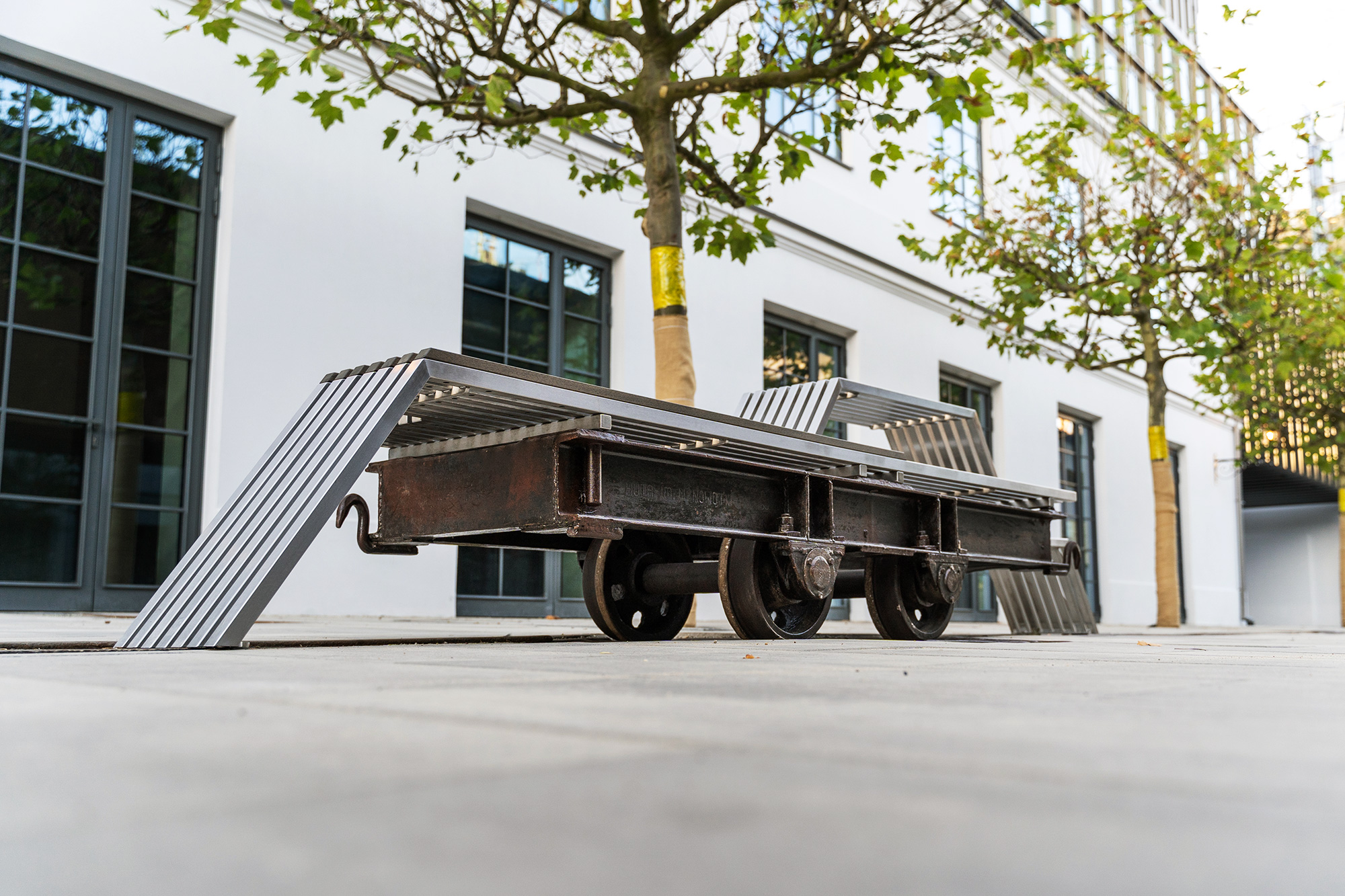Published: 21 March 2022
Cart from Norblin Factory
A group of third-year students, commissioned by Capital Park Group, a coowner of Norblin Factory, worked on preparing seats based on a model of a transport cart that was once used in the factory. The most interesting projects were carried out and introduced into the public space of the revitalised facility.


School of Form Project in collaboration with Norblin Factory Foundation
Bench seats on factory trolleys
At the revitalised 19th century Norblin, Bracia Buch i T. Werner factory complex, a new city quarter emerged complete with offices, stores, restaurants, boutique cinema and an open museum commemorating the history of the Factory – one of the largest industrial enterprises in the olden days of Poland. The Norblin Factory museum features historic machinery set to resemble fragments of technological lines. Some of them are genuinely rare items. Apart from museum exhibits, the renovation left other historic objects in place. The owners wanted to find purpose for them so as to retain the most of the spirit of the old factory.
The third-year students of Domestic Design were tasked with developing a concept of a design to adapt a historic factory cart to a function of a seat in the revitalised space of Norblin Factory. They visited the factory during construction and maintenance works, learning its history and the concept of adapting spaces to suit new functions. They also studied the current social and architectural characteristics of the direct surroundings of the investment. Then, they started work with the original cart, which was temporarily placed in the University’s yard. They also had access to historic and maintenance documentation.
Works were carried out in three teams, each preparing a number of concepts for the cart’s adaptation. During the works, designs were consulted with the client’s representatives. Students prepared sketches, moodboards, scale models, ergonomics tests of the seat prototype and structure. Three concepts were finally selected, one from each team. Students prepared technical documentation necessary to implement the project. Bench designs were manufactured and can be viewed at Norblin Factory in Warsaw.
